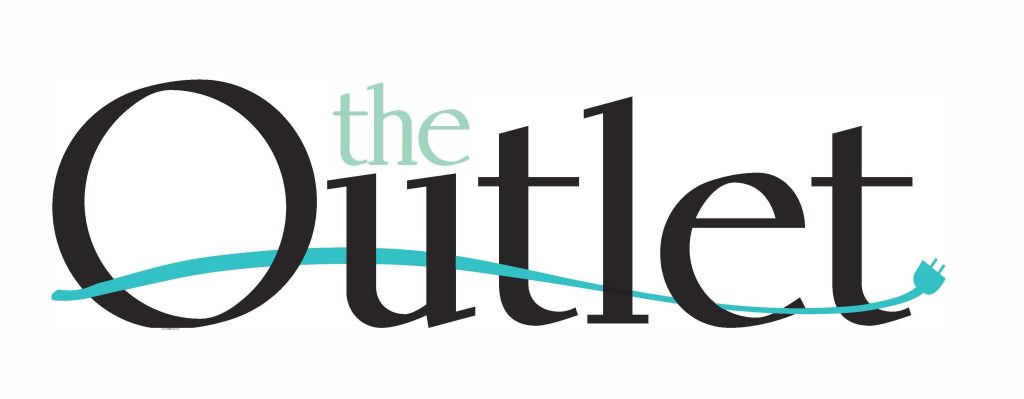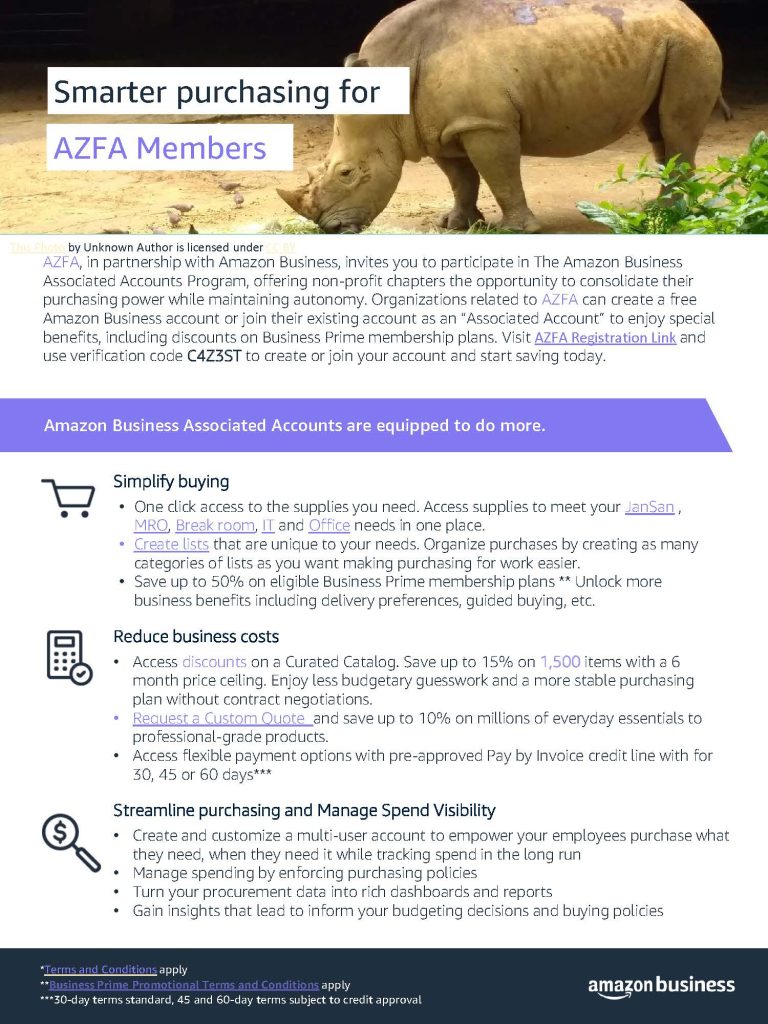
Are You Plugged In?
Welcome to our digital news page! We're hoping this page will engage our members an keep them updated with committee and conference happenings, safety and sustainability tips and an opportunity to show off the hard work we are all doing.
If you have content ideas or would like to contribute, reach out to Nikki.Dzialowy@NWTrek.org
This page was updated on 4/8/2025
2025 Conference Planning is Underway!
The Conference Planning Committee has a goal to have Registration and an Agenda posted no later than June 1. A few notes we can provide now include:
Location: Salt Lake City, UT
Hotel: Little America
500 South Main Street
Salt Lake City, UT 84101
801-258-6759
Room Rate: Garden Room $179/day or Tower Room $209/day
Dates: Sunday October 26 - Thursday October 30
You can book your room now: Book Your Hotel Room Here!
The Ice Breaker will be at the Lake Effect on Sunday 10/26.

REGISTAR FOR THE WEBINAR HERE


Contribute to the Outlet!
The Outlet has a lot of potential to engage our members. Our website has a lot of features that folks aren't using yet. During the conference, I saw a lot of folks discussing challenges they face each day.
I encourage all of you to use the Forums, even try to reach out via email. I can help connect you with others who could be facing similar challenges.
If you have a topic you'd like to share, send me an Outlet Article. For every article you submit that is posted to the site, you can earn $5 towards AZFA - either membership or conference registration.
Welcome New Members!
Since 1/1/2025
Carrie Jeske Vice President, JEI Structural Glass, Glazing, & Facade Engineering
Kenneth Yarnot Manager of Maintenance, National Aviary
Keegan Delk Maintenance Technician, Topeka Zoo & Conservation Center
Kevin Fonner Manager of Buildings & Grounds, National Aviary
Phillip Bravo Custodial, Point Defiance Zoo & Aquarium
Craig Burdge Maintenance Manager, Akron Zoological Park
Sarah Elam Purchasing Manager, Cincinnati Zoo & Botanical Garden
Gary Fisher Senior Maintenance Technician, Cameron Park Zoo
Lynn Grimm Maintenance Coordinator, Akron Zoo
Jordan Hoglund Fabrication, Point Defiance Zoo & Aquarium
Bella Jensen Custodial, Point Defiance Zoo & Aquarium
J.R. Johnson Carpenter, Point Defiance Zoo & Aquarium
Wendy Molinar Custodial, Point Defiance Zoo & Aquarium
Jason Long Electrician, Tennessee Aquarium
Ben Payne Director of Facilities & Operations, Mesker Park Zoo
James Fox Assistant Manager of Buildings and Grounds, National Aviary
Bailey Cadena Coexistence Project Manager, Cincinnati Zoo & Botanical Garden
Marcus Grissom Facility Supervisor, Tulsa Zoo, TZMI
Christopher Bair Project Manager, John Ball Zoo
Ryan Leland Maintenance Manager, John Ball Zoo
Ethan Wilson Facilities Maintenance II, John Ball Zoo
David Bruggink Life Support Engineer, John Ball Zoo
Michelle Davis Landscape Architect, LandDesign
Stephanie Moore Assistant Director, Louisville Zoo
Dan Cole Facilities Operations Manager, Louisville Zoo
William Nay Horticulture Supervisor, Louisville Zoo
Dustin Crawford AVP, Capital Projects and Facilities Maintenance, Dallas Zoo
Tracy Quandt Marketing Manager, Brightly Software
David Engelmann Manager Ground Horticulture Forestry, Milwaukee County Zoo
Elayne Hudson Strategic Solutions Consultant, Brightly Software
Eric Maas Custodial / Maintenance, Sunset Zoo
Tori Sipos Facilities and Maintenance Manager, Riverbanks Zoo and Garden
Jennifer Perkins Industry Marketing SME, Brightly Software
John Guertin Director of Facilities Maintenance, Riverbanks Zoo and Garden
Joe Carey Project Manager, Fossil Rim Wildlife Center
Tiffany Bateman Curator of Zoological Operations, Magnetic Hill Zoo
Lorenzo Fuentes Preventative Maintenance Technician, Phoenix Zoo
Sam Baird Maintenance Laborer, Woodland Park Zoo
Dylan Black LSS Technician, Woodland Park Zoo
Tracy Coonse Plumber, Woodland Park Zoo
Paul Hawkes LSS Technician, Woodland Park Zoo
Eddie Hodder Construction Heavy Equipment Operator, Woodland Park Zoo
Josh Pettitt Maintenance Laborer, Woodland Park Zoo
Marisa Tanigawa Maintenance Laborer, Woodland Park Zoo
Aarin Wilde Sustainable Waste Management Specialist, Woodland Park Zoo
Bill Abraham Maintenance Manager, East Coast Zoological Society of Florida Inc
Anthony Bailey Director of Facilities Operations, Nashville Zoo
Forrest Holman Maintenance Manager, Friends of the Zoo
rEcent Forum Posts?
Have you checked out the forum lately? Here are some recent posts that folks are looking for some help or answers on!
Glass Thickness for Anteater Exhibit
Tony Dawson
Does anyone have anteaters behind glass and what would be the thickness of the glass.
The Value of a True Asset Management System for Zoos and Aquariums
Jennifer Perkins, Brightly Software
Zoos and aquariums are treasured places in their communities. The focus is on the animals (as it should be) but the work that goes on behind the scenes to create this unique space is also important.
Maintenance teams work hard to create a pleasant and safe environment. It’s not just about picking up trash and trimming bushes (although those are important) but the overall maintenance of each and every important asset in the park. AZFA members have thousands of assets to track, repair and replace at the end of their life. But without an unlimited budget, organizations need to have the foundational data to make smarter decisions about future asset investment.
Do you have the foundational data you need and is it accessible?
Creating one central place to collect and store data about your assets is a great first step to creating the foundational data set you need. At a minimum, knowing the assets, their location, install date, and expected useful life can place an asset in a general phase of its lifecycle. But by connecting maintenance history to assets, you can get a truer view of asset health. Degradation curves can be a guide, but actual maintenance history can signal when the increase in the cost of maintenance becomes too much, and a replacement makes the most fiscal sense.
Many zoos and aquariums have a work order system that helps them keep on top of maintenance needs. They are important but work order systems alone do not track asset health; they track the work being done in a day. It is only when you combine the work being done with the asset information that you begin to understand the state of the asset. Having a true asset management system is vital to your daily maintenance activities and long-term asset health.
Insights gained from foundational data
Once you have data, you can gain insights on many things:
- Do you have the necessary resources to handle all the maintenance requests? By comparing work orders to staffing (by trade if necessary), zoos and aquariums can clearly show if there are enough hours in the workday to complete maintenance activities to guarantee public and animal health and safety.
- Are you staffed to meet the level of service expected? Organizations can show delayed response times and growing backlog of maintenance to be completed.
- Do you have bandwidth to add preventive maintenance to routine schedules? Adding preventive maintenance is likely to extend useful life and therefore the ROI on machinery, buildings and other important assets.
- What happens if you do nothing? By using budgets and asset health, organizations can show asset deterioration over time. This is a great way to help communicate consequences to decision-makers
- What level of risk is your organization willing to take? Looking at asset health, organizations can ask what level of risk is acceptable around aging assets? Asset risk is not the same for every asset. Looking at risk tolerance can inform decision-makers on capital planning prioritization.
- Can we be greener? By understanding existing assets, especially those nearing replacement, greener alternatives can be considered. Knowing where the assets are in their lifecycle gives zoos and aquariums the time to properly consider greener options.
Adding additional data points for monitoring
Organizations can add monitoring elements to their data set to target their resources even more efficiently. Sensors can alert organizations when assets are running abnormally, gone past their preventive maintenance suggested service actions or are being used more heavily than normal. This helps keep your buildings and grounds running in peak condition and intervening before an emergency. Many organizations choose to monitor their energy consumption (electricity and water) to see where they have “energy hogs” that can be replaced to save money. Energy monitoring can also identify unusual billing activity that can highlight a utility billing error, a leak or inefficient assets. Looking at energy expenditures over time can save zoos and aquariums money as they switch out equipment and see problems before they happen.
All in all, having a true asset management system helps with daily maintenance activities and gives you the insights you need to better utilize your resources, deliver an excellent customer experience and keep everyone safe and healthy.
-- Jennifer Perkins works at Brightly Software as an industry specialist for the public sector. Brightly has been a long-time partner of AZFA and its members.
Safety Note!
AZA Safety Committee Safety Resource Page
Did you know that AZA Safety Committee recently released a Resource Center on the AZA Website? This site includes previous conference presentations, Drill planning 101, guidelines for building an emergency plan, mental health resources and other resources that have been vetted by the AZA Safety Committee.
We encourage you to check it out if you have not already. Membership in AZA is not required to access this resource. Click the link below.



